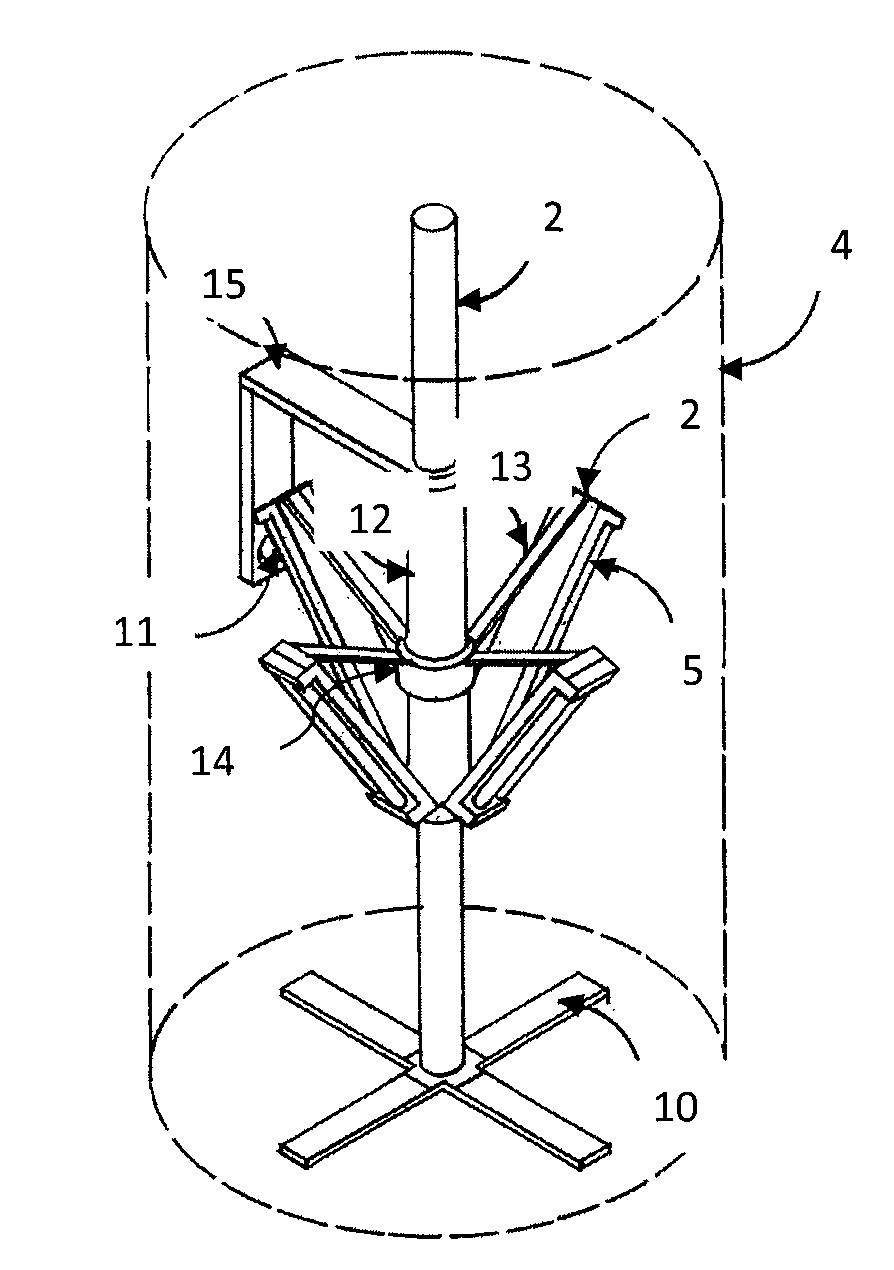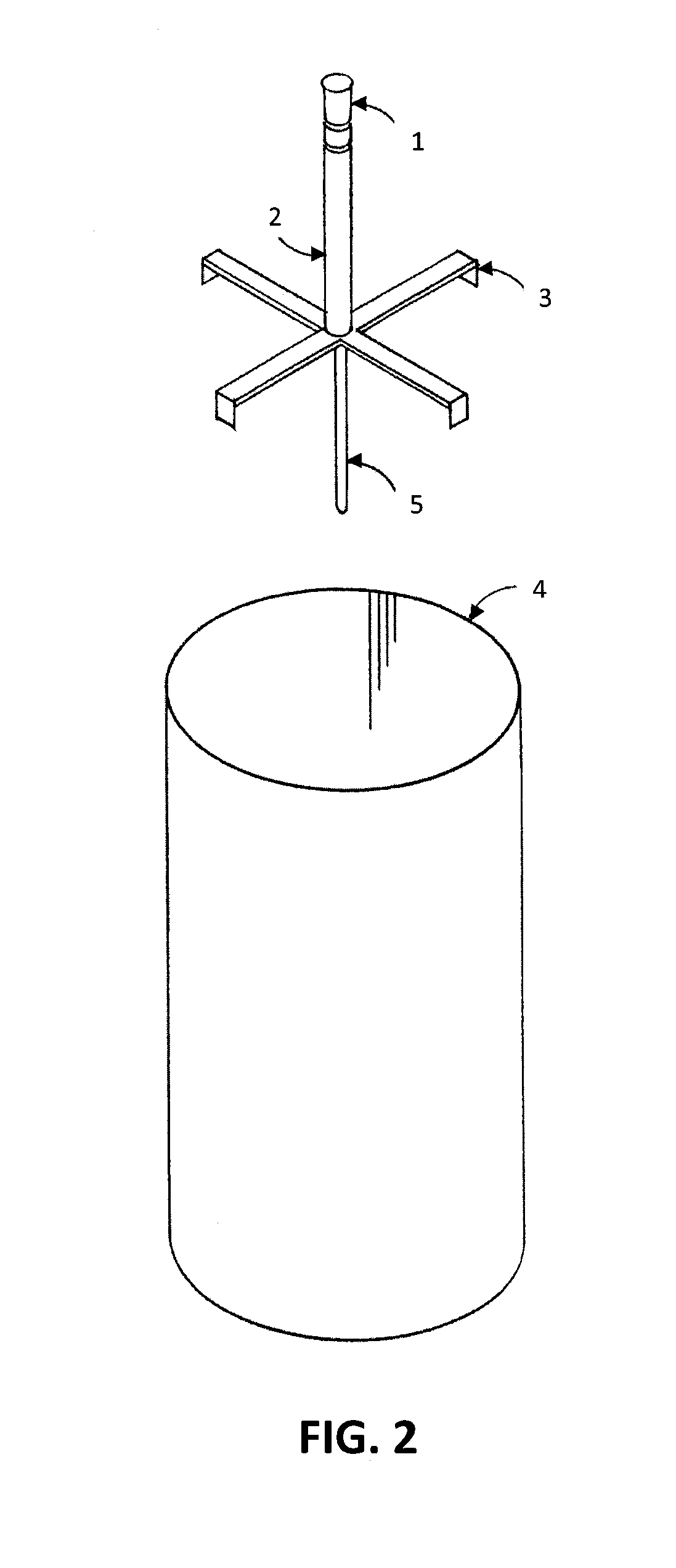UV devices, systems and methods for UV sterilization
a technology of uv devices and sterilization methods, applied in the field of compositions, systems and methods for uv disinfection of containers, can solve the problems of inability to reproduce microorganisms, inability to use large amounts of water as a solvent for both solutions, unstable gas of ozone, etc., and achieve the effect of enhancing the functionality of a portable uv devi
- Summary
- Abstract
- Description
- Claims
- Application Information
AI Technical Summary
Benefits of technology
Problems solved by technology
Method used
Image
Examples
example 1
Assessing Microbial Concentration
i. Inoculation of a Container
[0704]The following is an exemplary method for assessing microbial concentration in a tank after UV disinfection according to a method described herein and after using the standard sodium hydroxide and citric acid procedure or hypochlorite and citric acid (Emmanuel et al., 2004, Environmental International, 30(7): 891-900).
[0705]Four tanks (wine fermentation vessels; stainless steel) are provided. Two tanks have a 36″ radius and two tanks have a 60″ radius and a height of 120″. The tanks are pressure washed with water and inoculated with spoilage yeast, cultured yeast, and pathogenic microorganisms (see Table 8).
[0706]
TABLE 8Exemplary Inoculating Containers (Tanks) With MicroorganismSpoilage YeastCultured YeastPathogenic MicroorganismsBrettanomyces abstinensSaccharomycesSalmonella sppBrettanomyces custersianusYersinia enterocolitica andBrettanomyces intermediusVibrio cholerae O1Brettanomyces lambicusVibrio cholerae non-O1...
example 2
Calculating Killing of Microorganisms
[0721]The following provides the steps to calculate the time needed to kill a desired microorganism using compositions and methods of the present invention. The required Energy Dosage of UV Radiation (UV Dose) in μWs / cm2 needed for kill factor is provided herein in Tables 1-5. To determine the intensity of UV on a surface at various distances from a germicidal UV lamp one divides the radiant energy (shown in microwatts per square centimeter at one meter) by the intensity factor as shown in the Table 9 below.
[0722]
TABLE 9Intensity Factor (American Ultraviolet Company, Lebanon, IN 46052, USADistance from UV Lamp2″3″4″6″8″10″12″14″18″24″Intensity32.322.818.612.99.857.946.485.353.62.33FactorDistance from UV Lamp39.37″36″(1 meter)48″60″80″100″120″Intensity1.221.00.6810.45202560.1690.115Factor
[0723]Using a UV lamp with an output of 190 microwatts / cm2 at 254 nm (at a distance of 1 meter), placed within a fermentation vessel 36″ from the interior surface...
example 3
Inhibiting the Growth of Bacillus Subtilis
[0727]To determine the effectiveness of a method of the present invention and efficacy of a UV device of the present invention for the sanitization of a stainless steel tank used in the wine making process, the killing / growth arrest of Bacillus subtilis (American Type Culture Collection, ATCC Number 82TM; designations: AMC [ATCC 8037, NRS 315]) was investigated. Bacillus subtilis forms spores, thereby making it a more UV resistant microorganism than microorganisms that do not form spores. In this experiment 30″ SE UV-C lamps (Steril-Aire) were used. Three identical UV lamps were placed in a mount and put in a spiral configuration with each UV lamp set at a 15 degrees angle.
[0728]Two coupons (per time point) were spiked with a Bacillus subtilis suspension to give a final concentration of 9.6×106 CFU (colony forming units) / coupon for the first three time points. The fourth (25 minute) time point was inoculated with a suspension of 1.3×107 CFU...
PUM
| Property | Measurement | Unit |
|---|---|---|
| angles | aaaaa | aaaaa |
| angles | aaaaa | aaaaa |
| wavelength | aaaaa | aaaaa |
Abstract
Description
Claims
Application Information
 Login to View More
Login to View More - R&D
- Intellectual Property
- Life Sciences
- Materials
- Tech Scout
- Unparalleled Data Quality
- Higher Quality Content
- 60% Fewer Hallucinations
Browse by: Latest US Patents, China's latest patents, Technical Efficacy Thesaurus, Application Domain, Technology Topic, Popular Technical Reports.
© 2025 PatSnap. All rights reserved.Legal|Privacy policy|Modern Slavery Act Transparency Statement|Sitemap|About US| Contact US: help@patsnap.com



